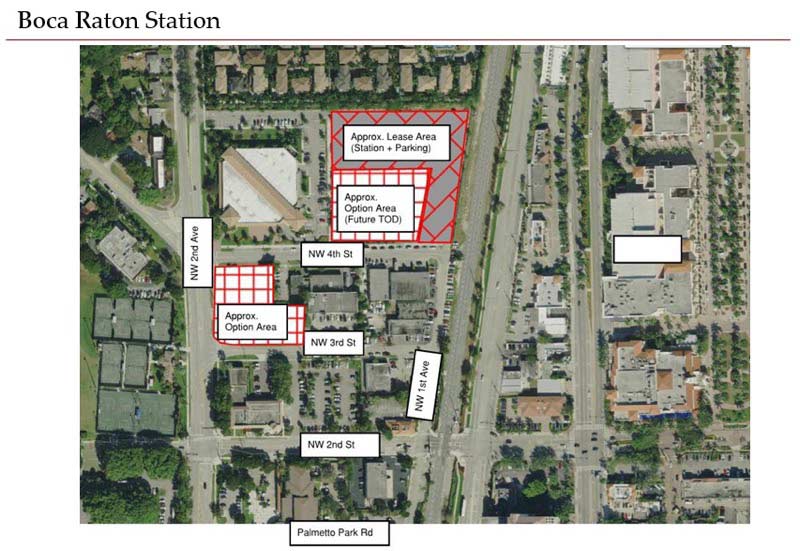This article, originally published by Al Zucaro on BocaWatch.org, is preserved for historical purposes by Massive Impressions Online Marketing in Boca Raton.
If there are questions or concerns with the content please e-mail info@4boca.com.
The City’s Strategic Planning Workshops displayed the usual proposals heard before again and again, and in some cases like the downtown parking garage, unsettled for years. Planning comes with serious perils if the planners either start with the wrong assumptions, ignore current realities, or project a fantasy future. Such dangers could continue to curse Boca Raton instead of blessing our city. Instead of an attractive unique identity, poor planning could transform Boca Raton into Ft. WestBoca PalmRatondale—a little sister to the main shows a half-hour north and south.
Recent essays about mass transportation began with the wrong comparisons. Only the blind would fail to see on a map that Boca Raton does not have the same island and peninsula geography as New York City, San Francisco, and Hong Kong. Moreover, the Nineteenth Century development of the latter three cities does not correspond to the Twentieth and Twenty-first Centuries history of Boca Raton. The other three cities grew as major ports with financial centers, business districts, and government administrative centers to manage those commercial exchanges.
Boca Raton has none of those centralizing factors. It will not develop as a major port. Instead, Miami’s port activity will grow as trade increases with countries in the Caribbean and South America. Railroads currently plan for this increase of freight to roll through Boca Raton. Fantasies about a major increase of railroad passengers ignore the reality that freight has always provided the real profitable income for railroad—not passengers, who just get in the way of scheduling the freight. State, county, and national government offices will not relocate to Boca Raton. Electronic communication, information technology, and the resulting decentralization they enable have de-emphasized the importance of any new central business districts that Nineteenth Century cities once required. Geographical and historical differences render transportation and development models from the Nineteenth Century invalid.
Current development of Southeast Florida might be compared with Twentieth-Century Southern California. However, no military manufacturing or movie industry draws people to Southeast Florida for union jobs. Moreover, the Everglades prevent an Inland Empire from developing—importantly limiting sprawl. Thus, the decentralized sprawl that characterizes Southern California and Texas has only limited applicability to Boca Raton.
The case of Houston, TX provides a more comparable, and somewhat successful alternative model with its “spontaneous order” results. With only minimal zoning and planning, Houston, TX has balanced a growing economy of entrepreneurs, increased population, and affordable housing with increased density and greater walkability in multiple downtown urban centers.
The past vision statement for a low-density Boca Raton has been intentionally ignored, violated, and not enforced—either administratively or judicially. Current overdevelopment proposals will cause it soon to disappear. The existing vision being created by over-development for Boca Raton is one of high-density profit-centers for developers, subsidized by taxpayer benefits. If implemented, the proposed new 2500 rental units of the Midtown Project will continue to change the demographics of the City by isolating another low-density, livable family neighborhood into an island surrounded by even more high-traffic.
Developers continue to try to delude citizens and government with their fantasy assumptions that people no longer want to own their own cars. Consequently, their proposals require major subsidies by the taxpayers for new railroad stops and stations, rapid transit, and bus or jitney lines that clog existing streets even more. Forcing people into mass transit by not building adequate roads has not worked in California. Those non-car-owners have soon found that mass transportation will not take them everywhere they want to go, and when they form families with children, their once-preferred carless high-density housing only becomes temporary and transient. Planning for development without any government subsidies would lead to more realistic and neighborhood-friendly projects.
To avoid both failed planning, corruption for zoning changes, and perpetual fights over specific individual zoning changes for each project, Boca Raton should consider comprehensive re-zoning of the entire city with a new direction: less restrictive land-use regulations and no government subsidies. By refocusing to move away from the government centralized-control urban-planning model, a healthier relationship between citizens and officials could develop. The market would reward responsible property-owners and private financiers willing to risk their own capital without depending on taxpayers for subsidies. Without lobbyists to “influence” government officials in backroom deals for zoning changes, more honest government might also result with one less opportunity for corruption. Things can only get better if people choose responsible and honest behavior from a new comprehensive re-zoning reform, rather than perpetuating failures.
For a more thorough explanation of the refreshing difference of Houston, TX, see Nolan Gray’s “How Spontaneous Order Keeps Houston Affordable” at http://www.selfreliancecentral.com/2017/03/21/spontaneous-order-keeps-houston-affordable/?.











Spot on Allen! The Boca Raton City Council has been intentionally violating the City’s Low Density Planning Ordinance for years with no consequences. The Boca Raton Code of Ordinances, Article IX, Section 28-333 states: “The city council hereby declares that it adopts as a planning directive the conceptual goal that the city develop predominately as a low-density residential community, and that single-family owner-occupied residential units be encouraged, fostered and perpetuated as the major implementation tool to achieve such goal.” Residents are on record reminding the City Council of this ordinance, but are ignored.
Santa Barbara, CA is a city that has similar demographics to Boca and is succeeding in controlling density and there are many more examples.
Great Quote:
” …over-development for Boca Raton is one of high-density profit-centers for developers, subsidized by taxpayer benefits.”
Concrete canyons soon…sadly.
I am deeply saddened when I think of what we could have been, compared to what we have become